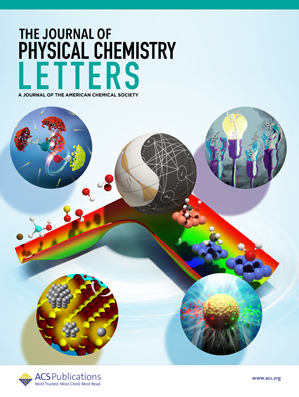Boosting Photovoltaic Efficiency: The Role of Longitudinal Carrier Transport in Carbon Dot-Modified Perovskite Films
IF 4.8
2区 化学
Q2 CHEMISTRY, PHYSICAL
引用次数: 0
Abstract
Defect passivation engineering, an effective strategy to optimize grain boundaries and reduce defects in organic–inorganic hybrid perovskites, has been widely used to improve device performance; however, knowledge of its impact on the carrier transport property is still limited. Herein, we take carbon dot (CD) passivation as an example to explore the effect of surface modification on the longitudinal carrier diffusivity (D) in CH3NH3PbI3 perovskite films by using transient reflection spectroscopy. The results show that the D value remarkably increases from 0.30 cm2 s–1 in unmodified film to 1.02 cm2 s–1 in CD-modified film due to their enhanced conductivity, where CDs act as a highly conductive interstitial medium to enhance intergrain contact. Benefiting from the increase in carrier diffusivity, the power conversion efficiency of CD-modified perovskite solar cells (PSCs) increased from 23.1% (unmodified) to 25.4%, strongly confirming the positive effect of CD passivation on the PSC performance. Our finding highlights a novel avenue for enhancing PSC performance through the improvement of longitudinal carrier diffusivity via high-conductivity nanomaterial doping.

求助全文
约1分钟内获得全文
求助全文
来源期刊

The Journal of Physical Chemistry Letters
CHEMISTRY, PHYSICAL-NANOSCIENCE & NANOTECHNOLOGY
CiteScore
9.60
自引率
7.00%
发文量
1519
审稿时长
1.6 months
期刊介绍:
The Journal of Physical Chemistry (JPC) Letters is devoted to reporting new and original experimental and theoretical basic research of interest to physical chemists, biophysical chemists, chemical physicists, physicists, material scientists, and engineers. An important criterion for acceptance is that the paper reports a significant scientific advance and/or physical insight such that rapid publication is essential. Two issues of JPC Letters are published each month.
 求助内容:
求助内容: 应助结果提醒方式:
应助结果提醒方式:


